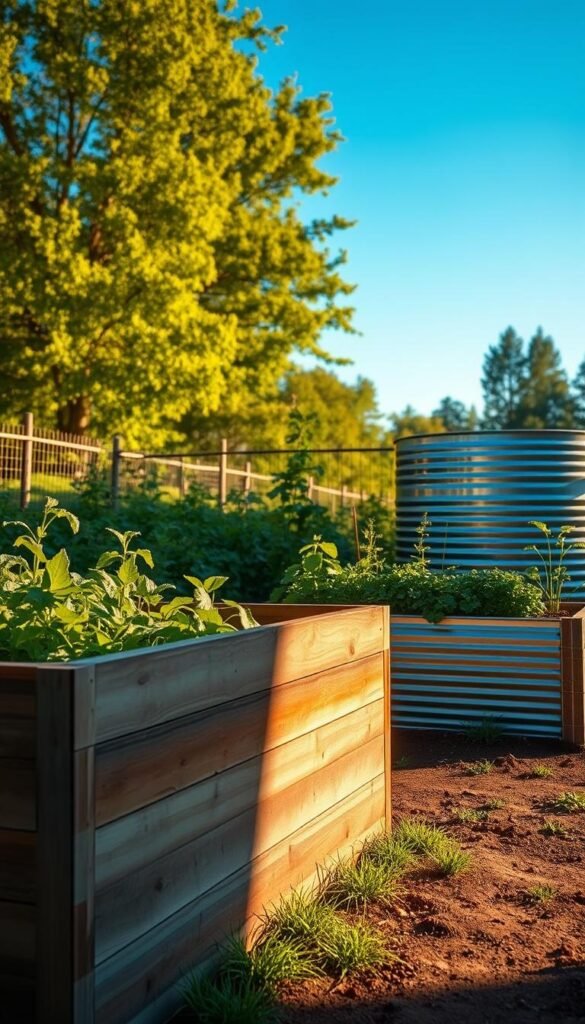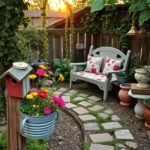Gardening enthusiasts often face the challenge of poor soil quality, stubborn weeds, or limited mobility. Raised garden beds offer a practical solution, improving drainage, reducing back strain, and keeping pests at bay. Whether you prefer the rustic charm of cedar or the sleek durability of metal, selecting the right setup depends on your priorities.
Durability and cost are key factors. Cedar beds, like those from Cedarline, last 4–10 years, while metal options such as Birdies can endure over two decades. Maintenance and aesthetics also play a role—wood blends naturally but requires sealing, whereas metal resists rot but heats up faster.
For edible gardens, always choose non-toxic materials to ensure food safety. Your ideal choice balances longevity, budget, and visual appeal to create a thriving outdoor space.
Why Raised Beds? The Benefits of Elevated Gardening
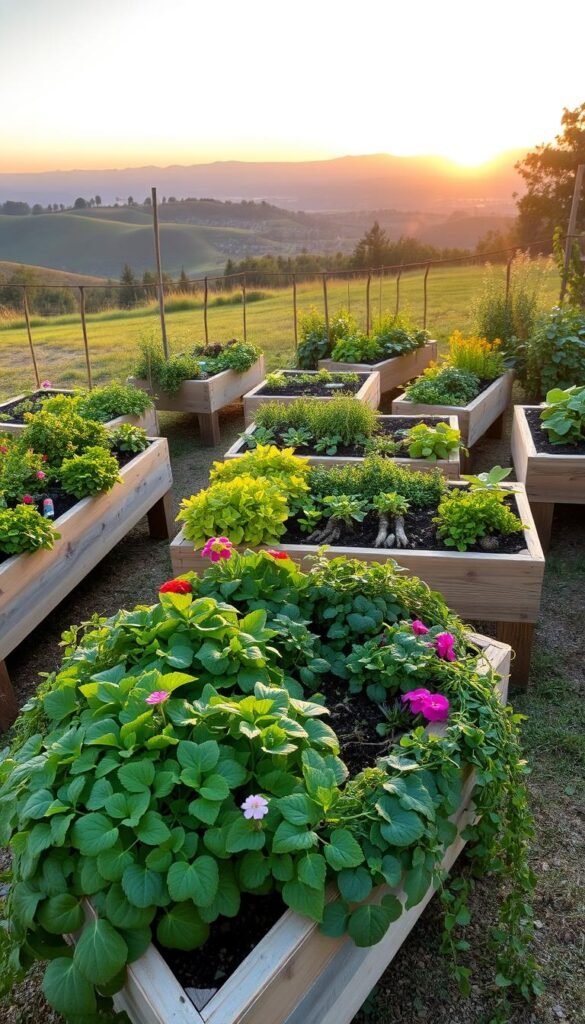
Elevating your garden isn’t just a trend—it’s a game-changer for soil health and comfort. Whether you’re growing herbs or tomatoes, raised garden beds give you precision over soil quality and reduce physical strain. Let’s explore how they transform your gardening experience.
Better Soil Control and Drainage
Poor drainage and compacted earth won’t stand a chance. With garden beds, you fill them with the perfect soil mix—no more guessing. Roots breathe easier, and water flows freely, preventing rot.
Easier Access and Less Strain
Bending over for hours is history. Brands like Cedarline design beds at 15″ height, while Birdies offers a 32″ option for wheelchair users. One gardener shared:
“After switching to raised beds, my back pain vanished—I can weed for hours now!”
Choose a height that matches your needs. Your plants—and your body—will thank you.
Durability Showdown: Which Material Lasts Longer?
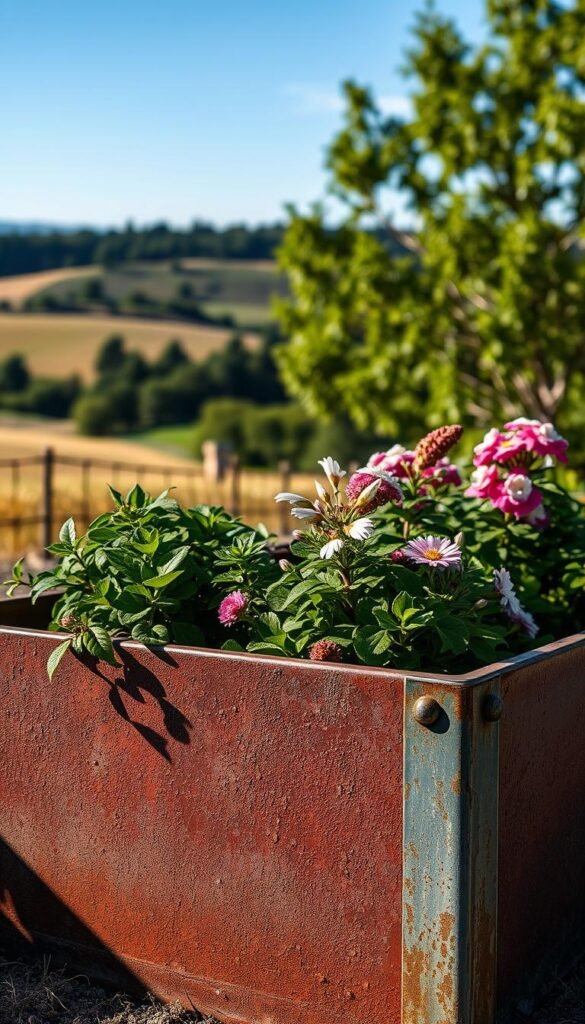
Your garden’s foundation should withstand weather, pests, and time. While wood offers charm, modern metal raised beds deliver unmatched longevity. Let’s compare how each holds up.
Wood’s Battle Against Rot and Pests
Cedar beds last 4–10 years but face constant threats. Moisture warps untreated wood, and termites can turn frames to dust. Even with sealants, expect gradual wear.
Metal’s Resistance to Rust and Corrosion
Aluzinc-coated steel, like Birdies’ beds, resists rust for 20+ years. Galvanized options are recyclable, and brands like Vego add reinforced edges for safety. Worried about soil contamination? USDA-approved paints ensure *non-toxic coatings*.
- Traditional vs. Modern: Stock tanks rust faster than powder-coated designs.
- Safety First: Vego’s rolled edges prevent cuts, ideal for families.
- Myth Busting: Properly coated metal won’t leach into soil—research confirms it.
For a metal garden that thrives decades later, steel outperforms wood’s fleeting appeal.
Cost Comparison: Upfront Price vs. Long-Term Value
The true cost of a garden bed isn’t just the price tag—it’s the long-term investment. While wood may seem cheaper initially, metal’s durability often makes it the smarter financial choice over time. Let’s break down the numbers.
Budget-Friendly Wood Options
Cedar beds start around $50, but prices soar to $600 for larger designs. The catch? They last just 4–10 years. Annual sealing or staining adds $20–$50 per years, and pests may force early replacements. As one gardener noted:
“I spent $300 on cedar, then another $200 on sealant and repairs—it added up fast.”
Metal’s Higher Initial Cost but Lower Maintenance
Birdies’ metal raised beds start at $169, while Vego’s 32” bed kit runs $299. Though pricier upfront, they need zero maintenance and last 20+ years. No sealing, no rot—just decades of growth. For those prioritizing long-term value, metal’s savings are undeniable.
- Modular Kits vs. DIY: Prefab metal kits snap together in minutes. DIY stock tank conversions? They rust faster and lack warranties.
- Hidden Costs: Wood requires tools and time for assembly—metal often ships pre-drilled.
- Yield ROI: As this study shows, metal’s durability supports higher veggie yields over time.
Aesthetics and Style: Rustic Charm vs. Modern Sleek
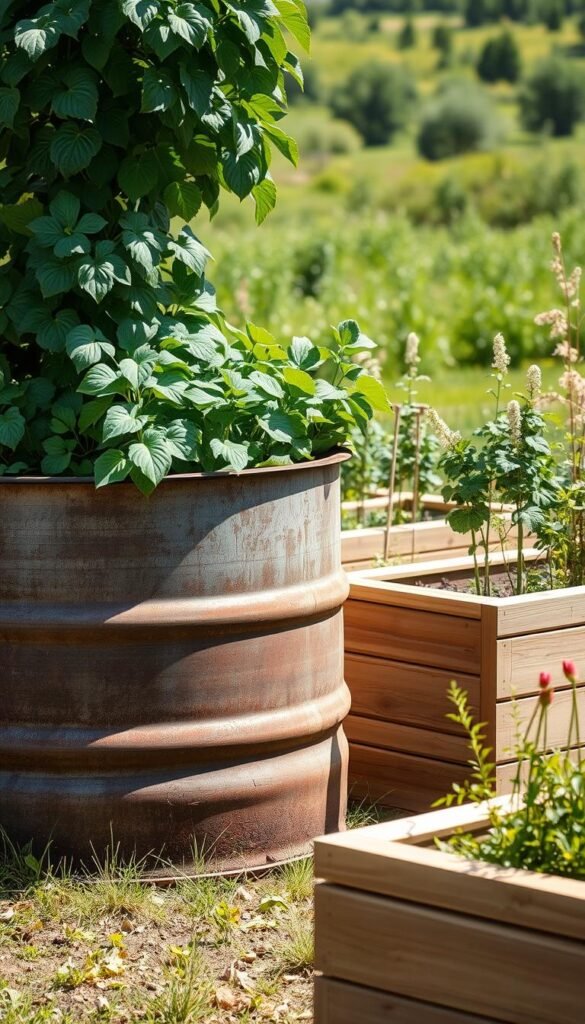
Your garden’s visual appeal is just as important as its functionality—let’s explore design options. Whether you lean toward cozy homestead vibes or crisp contemporary lines, materials shape your space’s personality.
Wood’s Natural, Homestead Appeal
Cedar frames blend seamlessly with traditional gardens. Their warm tones and angular edges evoke a handcrafted feel. Pair them with wildflowers or herbs for a cottage-core aesthetic.
Metal’s Contemporary and Industrial Look
Metal garden beds, like Birdies’ steel designs, offer sleek curves and modern finishes. Their colors—sage green, slate gray, or light clay—complement urban patios or minimalist landscapes.
- Urban Fit: Rounded metal beds soften concrete-heavy spaces.
- Shape Contrast: Angular wood vs. fluid metal shapes create focal points.
- Coordinated Décor: Match metal finishes to outdoor furniture for cohesion.
Your choice depends on the way you want your garden to feel—timeless or trend-forward.
Installation and Customization Ease
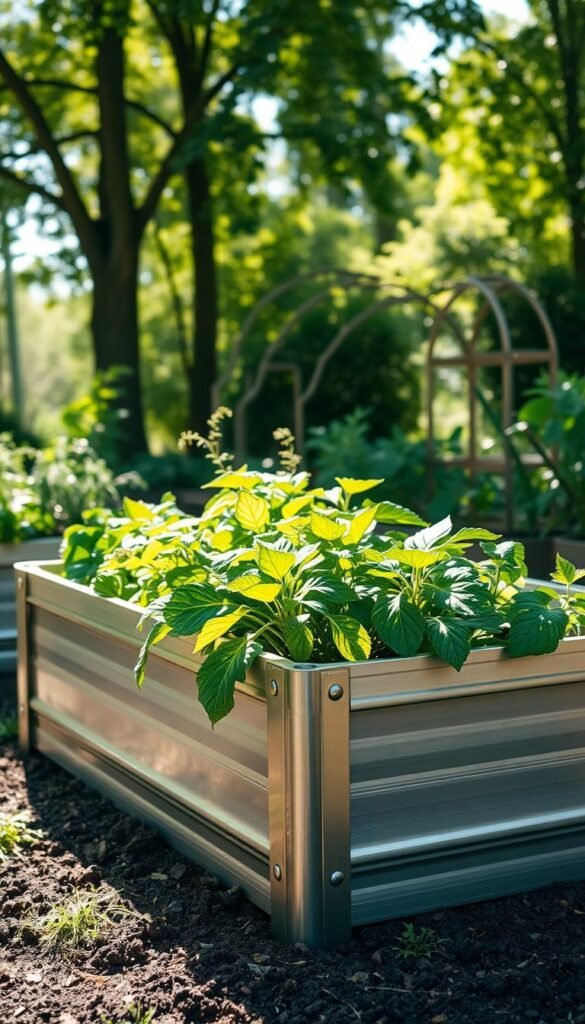
Customizing your growing space is easier than you think, whether you prefer DIY or ready-made solutions. The right way to set up your garden depends on your skills, tools, and design vision.
DIY Wood Projects: Flexibility and Tools Needed
Building wooden frames lets you tailor dimensions to your space. You’ll need a saw, drill, and screws—plus time to sand and seal the wood. For curved designs, cedar’s flexibility shines, but uneven cuts can weaken the structure.
Prefab Metal Kits: Quick Assembly and Limited Shapes
Prefab metal raised beds, like Vego’s modular bed kit, use interlocking panels—no welding required. One gardener shared:
“I assembled my 8’ bed in 20 minutes with just a rubber mallet.”
Trade-offs exist: most kits offer fixed heights (under 32”), and stock tanks need extra drainage holes. But for speed, metal wins.
- Assembly Steps: Snap panels together, secure corners, and level the frame.
- Size Limits: Metal kits max out at 4’x8’ for stability; wood allows wider builds.
- Drainage Prep: Pre-drilled kits skip the hassle of drilling steel tanks.
Maintenance Requirements: Annual Care vs. Hands-Off
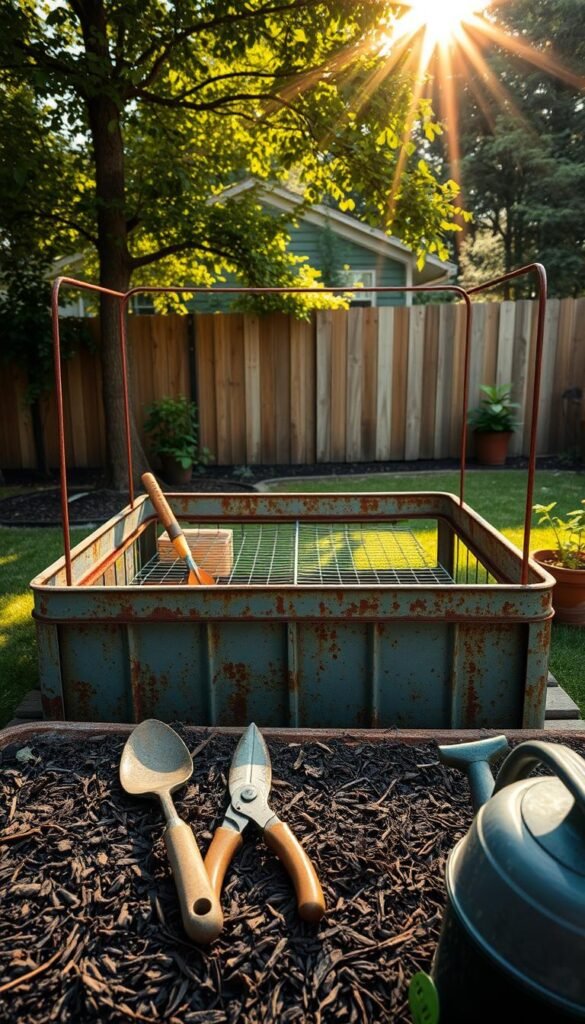
Keeping your garden thriving shouldn’t mean endless chores—some materials demand more attention than others. While wood needs regular TLC, metal beds offer a nearly maintenance-free way to grow.
Sealing and Replacing Wood Over Time
Cedar frames require yearly sealing to fend off rot. Without it, warping starts within 2–3 years. Termites and mold speed up decay, forcing replacements every 4–10 years.
Costs pile up: sealant ($20–$50/year), sandpaper, and tools. One gardener confessed:
“I spent 8 hours resealing my beds last summer—next season, I’m switching to metal.”
Metal’s Minimal Upkeep Needs
Powder-coated metal beds resist rust and stains. A quick rinse with a hose removes dirt. For scratches, touch-up paint ($10) blends marks seamlessly.
| Maintenance Task | Wood (10 Years) | Metal (10 Years) |
|---|---|---|
| Sealing/Repairs | $200–$500 | $0 |
| Replacement Cost | $300–$600 | $0 |
| Time Spent | 40+ hours |
- Cleaning Hack: Use vinegar-water spray for stubborn stains on metal.
- Longevity: Metal’s 20-year lifespan means no rebuilding.
- Safety: No chemical treatments needed—safe for edible plants.
Environmental and Safety Considerations
Your garden’s safety starts with choosing materials that won’t harm your plants or soil. From chemical leaching to rust resistance, each type of bed has unique risks and benefits.
Chemical Risks in Treated Wood
Pressure-treated wood often contains arsenic or copper compounds. These can seep into soil, especially in acidic conditions. Over time, they may contaminate herbs or veggies.
Cedar is safer but still needs sealants. Look for non-toxic stains labeled for edible gardens. One organic farmer warned:
“I lost a season of kale after my treated pine bed leached chemicals—now I test soil yearly.”
Food-Safe Coatings for Metal Beds
Aluzinc-coated steel (USDA-approved) resists rust without toxins. Avoid zincalume in acidic soils—it breaks down faster. Brands like Birdies use powder-coated finishes that won’t harm plants.
| Coating Type | Lifespan | Best For |
|---|---|---|
| Galvanized | 15+ years | Neutral pH soils |
| Powder-Coated | 20+ years | All soil types |
| Aluzinc | 25+ years | High-moisture areas |
- pH Matters: Soil acidity speeds up corrosion. Test levels annually.
- Color Safety: Birdies’ baked-on paints are lead-free and durable.
- Warranties: Some metal garden beds offer 20-year guarantees against rust.
Making the Right Choice for Your Garden Goals
Choosing between materials depends on your space, budget, and gardening style. Urban growers often pick metal garden beds for their compact way to maximize small patios. Homesteaders lean toward wood for its expandable option in larger plots.
Start by measuring your area and testing soil pH. If you’re tight on time, prefab metal kits assemble fast. For flexibility, mix materials—use metal for herbs near the kitchen and wood for berry bushes.
Need help deciding? Follow these steps:
- Check local climate—humid areas favor rust-resistant coatings.
- Order samples to compare textures and colors in your space.
- Explore budget-friendly raised bed designs for inspiration.
Your perfect setup balances practicality with personal taste. Whether sleek metal or rustic wood, both garden beds create thriving green spaces.

